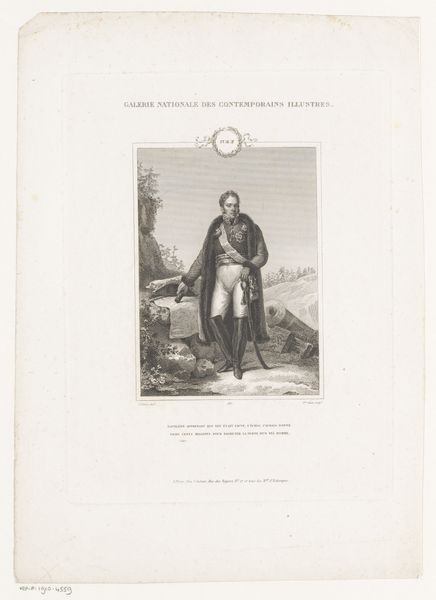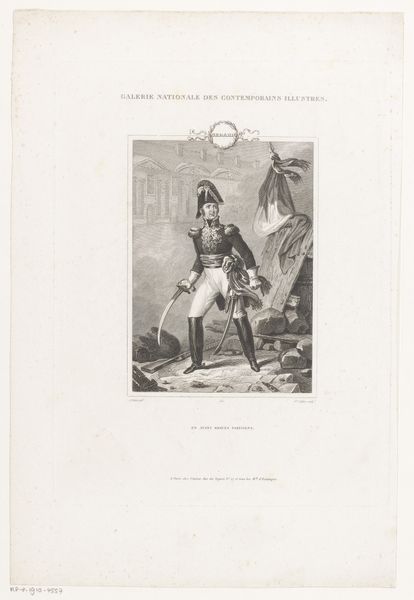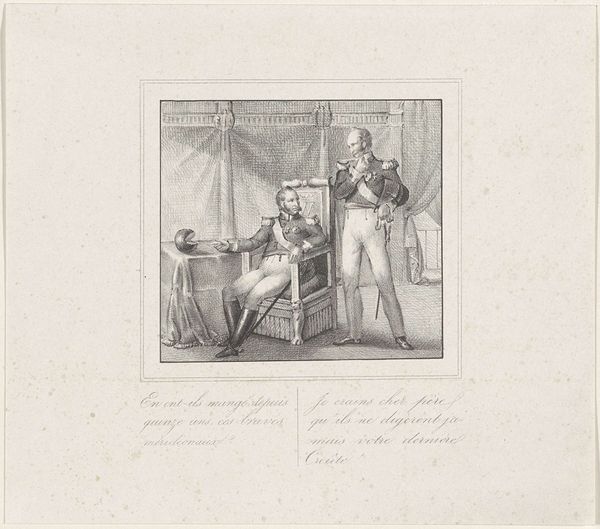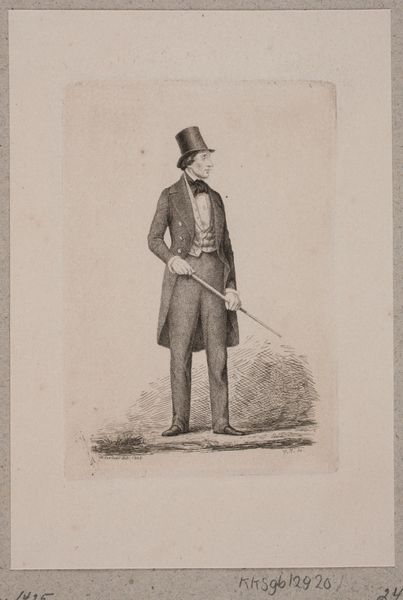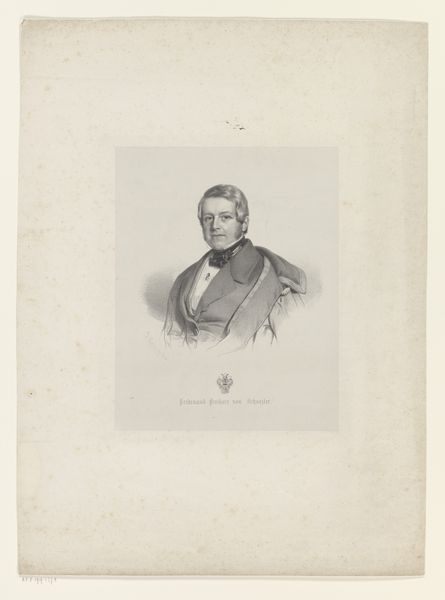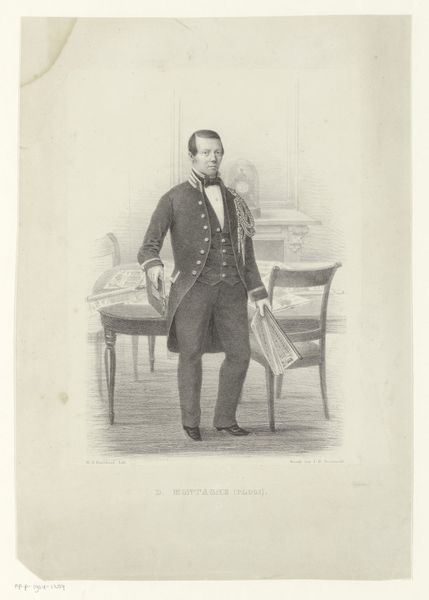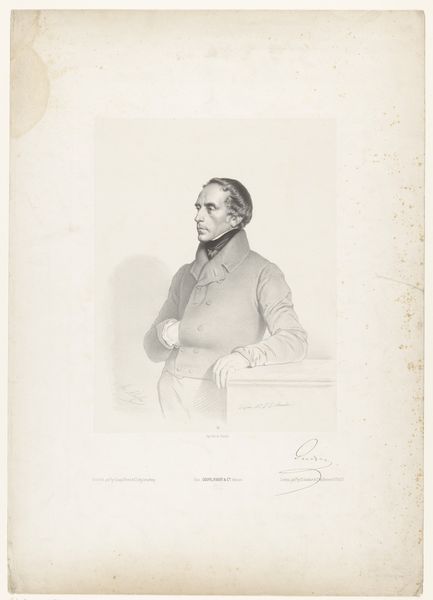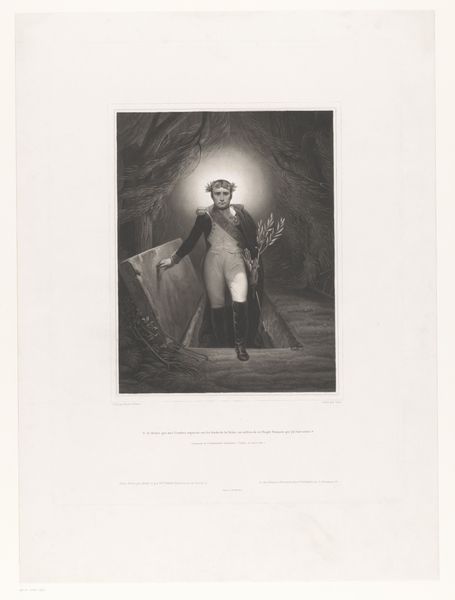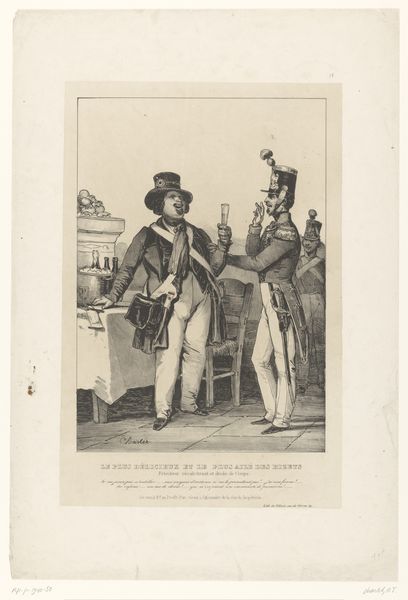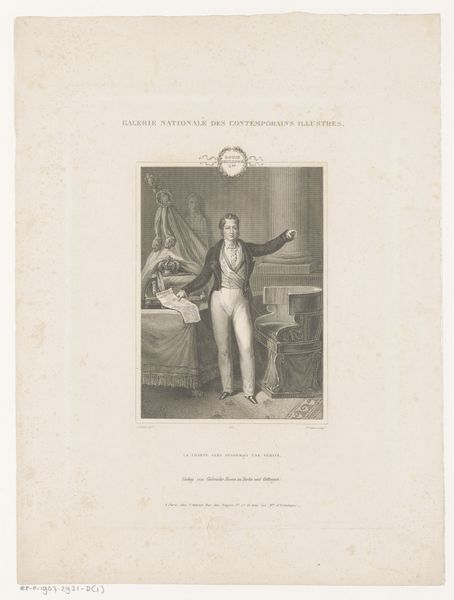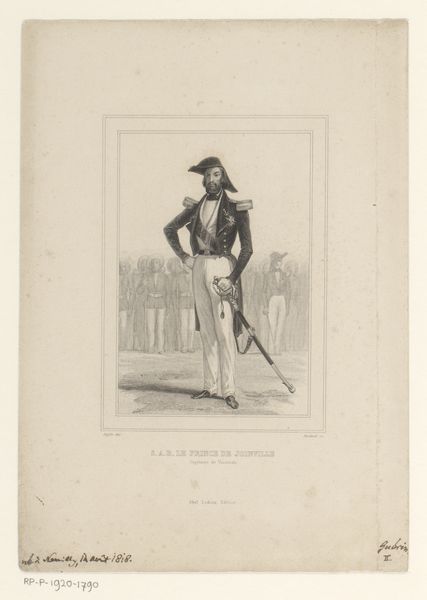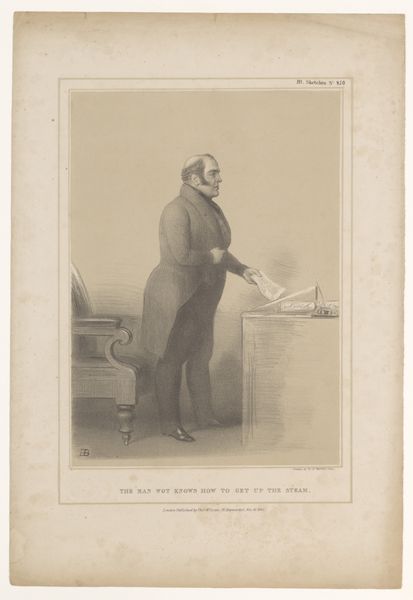
engraving
#
portrait
#
neoclacissism
#
figuration
#
line
#
history-painting
#
academic-art
#
engraving
#
monochrome
Dimensions: height 223 mm, width 170 mm
Copyright: Rijks Museum: Open Domain
Curator: Here we have Pierre Michel Adam's "Portret van Maximilien Sébastien Foy," an engraving completed in 1831. Immediately, the oratorical pose grabs you, doesn't it? Editor: Absolutely, there is a boldness there. He’s situated in what looks like a parliamentary space, hand outstretched as if mid-speech. The monochrome emphasizes a sense of severity, even of austerity, appropriate, perhaps, given the political climate. Curator: Foy was, indeed, a significant figure. This image comes at an interesting juncture in French history. Post-Revolutionary France was still grappling with the tensions between monarchical and republican ideals, and Foy, a general and political figure, embodied these contradictions. His stance and garb certainly speak to his status. Editor: How do you see those contradictions playing out in the image itself, beyond the general’s apparel? The neoclassical architectural backdrop feels intentional too, rooting Foy, I suspect, in certain philosophical traditions. Curator: The controlled lines and idealized presentation link it to Neoclassicism, a style revived, ironically, during periods of revolutionary fervor to evoke Republican virtue and order, almost a longing for Roman authority amid societal flux. It almost seems like the artist seeks to elevate Foy above the turmoil by grounding him in that classical framework. We must not also disregard the role of galleries in amplifying these artistic expressions to larger audiences. Editor: But the gesture…it’s also reaching towards a new world. His raised hand—seemingly a symbolic call to action—isn’t that just a reflection of his advocacy within the Chamber of Deputies for constitutional government? Isn't it intended to create a specific reading of Foy within a given framework of political ideals? Curator: Precisely! And there's a hint of melancholy, too, perhaps knowing the battles fought may not entirely achieve his ideals. Seeing it today prompts questions about what kinds of leadership were championed and memorialized at a particular point in history, and the ideologies such depictions reinforced. Editor: For me, it makes one ponder the artist's intent, not simply as a recorder of history but as an active participant in shaping narratives about power and political legacy, a practice very familiar to us today.
Comments
No comments
Be the first to comment and join the conversation on the ultimate creative platform.
